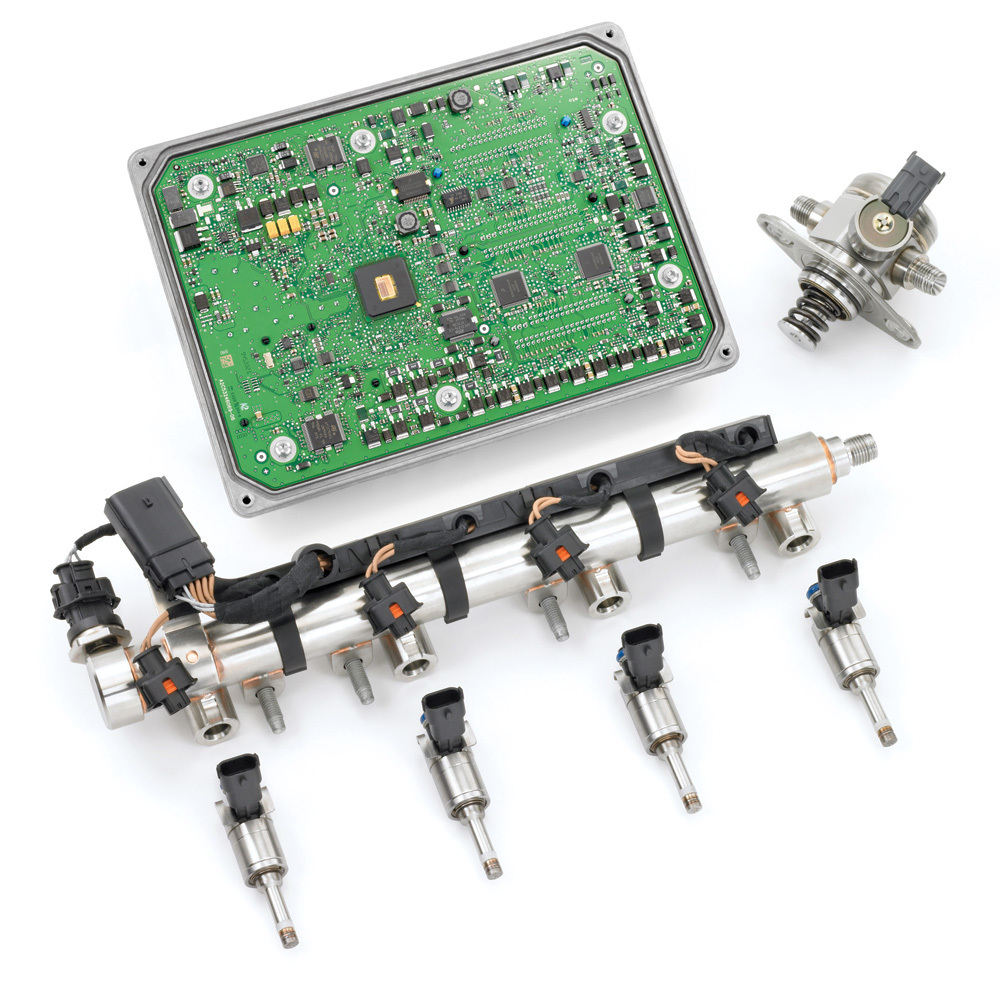Leaving Lag Behind

PHOTO: GM
March 10, 2011
BY Holly Jessen
What do you get when you combine twin turbochargers, direct injection and flex-fuel capability? The Buick Regal Turbo, the first U.S. engine to combine all three elements in a flex-fuel vehicle.
The result is a more powerful engine that uses less fuel and has lower emission numbers—previously conflicting goals. “It makes a four cylinder in a Buick a great product,” says Coleman Jones, General Motor’s biofuels implementation manager.
The company has been selling vehicles with all three elements combined in Europe but for technical and marketing reasons this is its first direct-injection, turbo charged FFV in the U.S. It won’t be the last, however. “I think you’ll see more of these, particularly in the smaller displacement engines,” Jones tells EPM. “It’s easier to take advantage of it with a small engine.”
A flex-fuel engine needs a higher flow-rate injector due to the fact that ethanol requires a richer air-fuel mixture than gasoline. Because a flex-fuel engine can have any combination of gasoline and up to 85 percent ethanol in its tank, a sensor in the fuel system measures the current blend. “This allows the engine management system to automatically adjust the mixture to provide improved performance and reduced emissions and fuel consumption,” the company says, adding that the vehicle also has stainless steel fuel lines.
A previous problem with lag in turbocharged engines has been fixed with twin-scroll turbos. Drivers familiar with those vehicles remember hitting the gas and not getting an immediate response until the vehicle suddenly took off. Another problem was that the vehicles sometimes surged forward without the driver requesting more power. “By having a twin-scroll turbo, what we do is we have two little turbos instead of one big turbo, it has a lot less inertia, so it spins up to boost much faster,” Jones says.
That gives the engine pick-up-and-go without it feeling at all like a turbo powered engine. "The 2.0-liter Ecotec turbo produces 258 pound-feet of torque from 2,000 to 5,500 rpm making it feel like a much-larger V6 engine while still delivering four-cylinder efficiency," says Ecotec chief engineer Mike Anderson.
Advertisement
The engine is downsize boosted, which Jones described as making a little engine look big with the use of a turbo. “You have the efficiencies of small engine most of the time and then when you need the additional power for passing, or what have you, it’s there through the turbo,” he explains. “We’re going to be doing a lot of small turbos because this is one way to meet the coming fuel economy targets.”
—Holly Jessen
Advertisement
Upcoming Events





